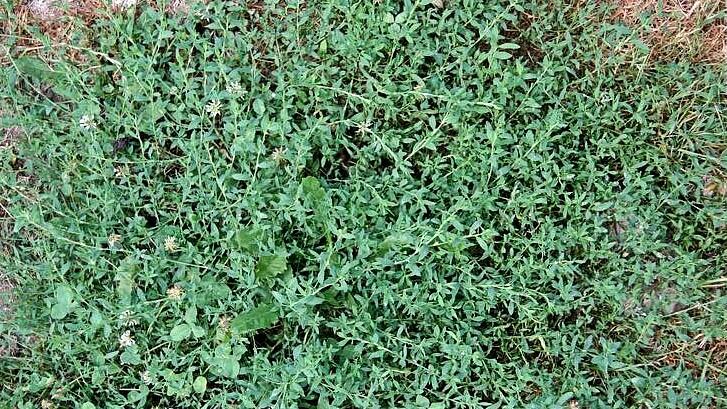General description
Knotweed is a summer annual broadleaf weeds that spreads by seed. Is low-growing and has wiry stems that form a mat. Leaves vary in shape depending on the maturity of the plant. Juvenile leaves are dark green and are long and slender. Older leaves are smaller and are duller green in color. Leaves are alternate along the stem. Small white or yellow flowers are inconspicuous and are located at the leaf axils. Blooms midsummer through the fall.

Conditions that favor growth
It grows in areas with heavily trafficked, compacted soils.

Management in lawns
Lawn care practices
Maintain healthy, dense turf that can compete and prevent weed establishment.
Mechanical management
Hand pulling or using an appropriate weeding tool are the primary means of mechanical weed control in lawns. This is a viable option at the beginning of an infestation and on young weeds. Hand pulling when the soil is moist makes the task easier.
Manage Weeds Without Chemicals
Chemical treatment in lawns
A preemergent applied in late summer/early fall can help prevent it from germinating, however, you will not be able to sow grass seed. Or spot treat actively growing weeds with a liquid, selective, postemergent, broadleaf weed killer in the spring before it goes to seed (photo at top of page). Look for a product with one or more of the following active ingredients: 2, 4-D, MCPP (mecoprop), Dicamba*, or Triclopyr.
*Do not spray herbicides containing dicamba over the root zone of trees and shrubs. Roots can absorb the product possibly causing plant damage. Read the product label for precautions.
